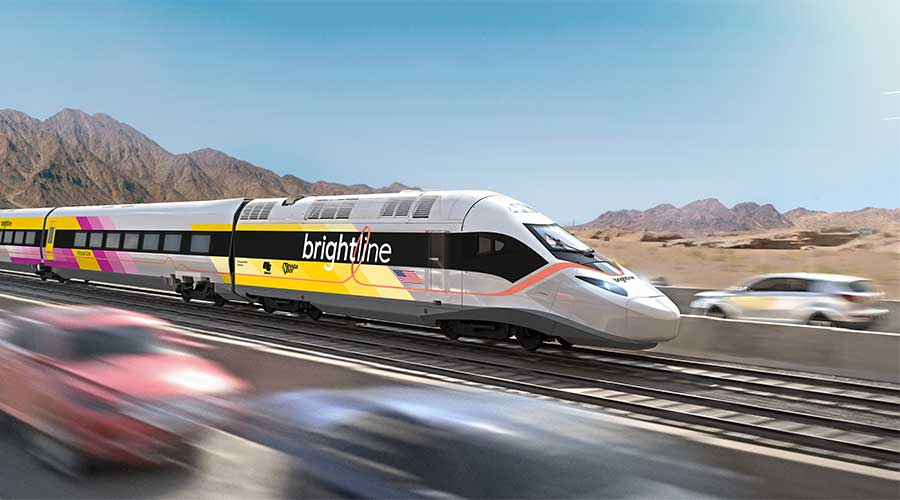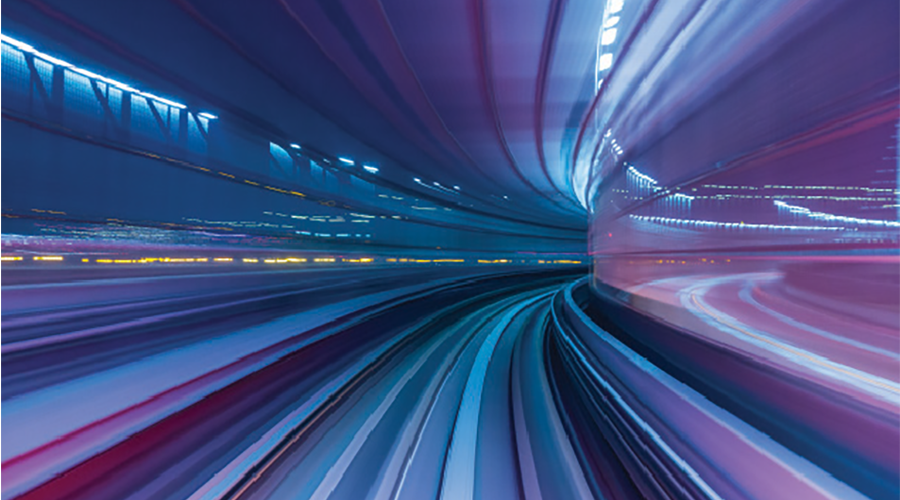Stay updated on news, articles and information for the rail industry
August 2013
Rail News: Passenger Rail
Rail-car interior color schemes making more of a splash with passenger railroads
By Angela Cotey, associate editor
Let's face it: Passenger rail-car interiors typically aren't aesthetically pleasing. Seats and walls often are decorated in gray or beige hues that become dingy and muted after years of wear and tear. But the colors are popular for a reason. They create a uniform look throughout the fleet and, while not necessarily in style, the colors never really go out of style, either.
But what if you boarded a rail car decorated in bright, vibrant colors? Or tints that reflected the local culture or environment? The color scheme just might create a feel-good atmosphere that would encourage more people to ride the train, and the transit system would become more visually integrated with the region it serves.
So says David Scott, head of design for Kydex L.L.C. The Bloomsburg, Pa.-based company manufactures sheet plastic that can be used for a variety of products, including medical parts, electrical components, and airplane and mass transit vehicle interiors. As the leader of the design team, Scott, who is based in New Zealand, travels the world to examine global and market trends for the industries Kydex serves. Scott uses his observations as a basis to determine new design and color schemes that would be appropriate for the various markets that use sheet plastic.
"Part of our company's drive is to work with the wider design community, the end users and the operators to show them that new thinking is possible," says Scott.
In the mass transit market, those end users are becoming more receptive to branching out and using different colors inside trains. Kydex has transit customers in the United States and throughout the world.
"We're seeing a wider collection of people involved in the color decision-making process," says Scott. "It's become less mechanical, less engineering driven and less dominated by function, and more about the actual effect and social consequences that color might have."
It helps that color is being more widely used these days to reflect personal style — and one need only reach in their pocket or purse to find the perfect example. Mobile phone accessories are an "unimaginable growth market" right now, with cell phone cases being manufactured in almost every color, pattern and finish one can think of, says Scott. The trend is carrying over to other markets, such as appliances. Bright-colored stand mixers, coffee makers and toasters are making their way into kitchens throughout the world.
Incorporating more color into transit interiors is becoming a logical next step, Scott says.
"In your living environment, most things around you are very much in tune with what's in fashion — the various colors, shapes and finishes," he says. "So, if you then go and get into your transportation mode and it's completely contrary to all of this, it doesn't create a good feeling."
But choosing an interior color scheme requires careful consideration. Agency officials need to think about passenger demographics — who they are, where they're coming from, what they do and how they think. Agencies also have to take into account the city's culture and surrounding environment.
"If you have a city that is, say, located on the water, and the water is visible through most of your comings and goings within that city, and then you get on an underground train and there's no connection with the outside environment, it's just not logical," says Scott.
Kydex recommendations
Kydex recently provided consultation services for an agency that does in fact operate near water. For the interior color scheme, Kydex designers suggested incorporating blues, grays and white.
In Europe, the firm worked with a passenger railroad whose trains traveled through the countryside. The operator selected a color scheme using light green tones that, combined with the train's oversized windows, make the passenger feel as though they are part of the landscape, says Scott.
"It's very much about taking you on a journey through this countryside and from a marketing point of view, it was a smart move by the operator," he says. "It creates a feel-good atmosphere and enhances the whole travel experience."
Kydex designers also worked with a rail operator in India and recommended colors such as hot pinks, vibrant yellows and crystal-clear blues, based on the color of the clothing people in the region wore.
"You wouldn't think that putting all those colors together would work on a train, but it couldn't have been more perfect, because it reflected the people that use the trains and created a synergy with that," says Scott.
Advancements in pigmentation technology in recent years have had an impact on plastics colors, as well, enabling companies such as Kydex to use a wider range of dyes, all of which are compliant with federal safety regulations that ensure dyes don't contain toxins that could be released in the event of smoke or a fire.
"We now have the pigment resins available to us that can be procured in such a way that there are very few end colors we cannot achieve," says Scott.
Of course, when outfitting a vehicle that will be in service for three or four decades, one probably shouldn't take too many color liberties. But as long as there's a well-thought-out strategy in mind, agencies shouldn't limit their train interior colors today with the fear that it will go out of style tomorrow.
"You can't ignore the fact that this is life, this is where people are at, this is what people are doing," says Scott.
Keywords
Browse articles on Kydex passenger rail cars interior colors David ScottContact Progressive Railroading editorial staff.


 LRW Honors Amtrak’s Acheson As Railway Woman Of The Year
LRW Honors Amtrak’s Acheson As Railway Woman Of The Year
 From Editor-In-Chief Foran: Of Gender Equity And Inclusion
From Editor-In-Chief Foran: Of Gender Equity And Inclusion
 Spotlight On Some Of Today’s Rail Safety Products
Spotlight On Some Of Today’s Rail Safety Products
 Women of Influence in Rail eBook
Women of Influence in Rail eBook
 railPrime
railPrime







